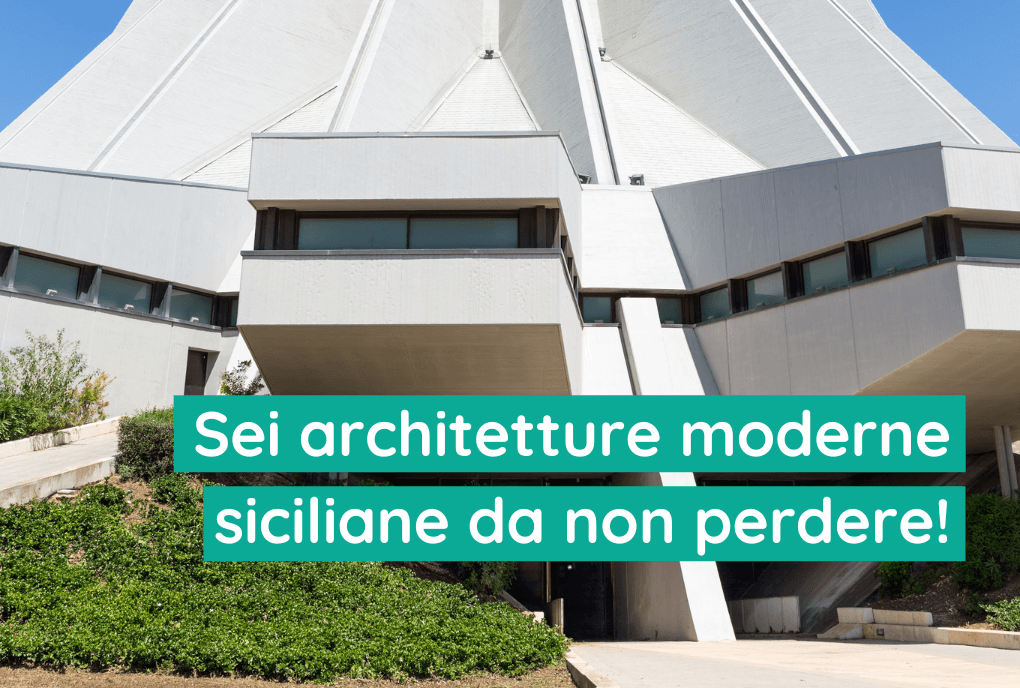
Six must-see modern Sicilian architectures!
For fans of modern architecture, here are some of the must-see works created by great architects who have left their mark on the Sicilian territory.
When we think of Sicily we imagine an architectural heritage that speaks of history, such as the Cathedral of Syracuse or the Temples of Agrigento. There really could be many examples, but they very often leave contemporary and modern architecture in the background, which offer just as many architecturally and engineeringally marvelous buildings.
Let’s see together some must-see constructions!
Giancarlo De Carlo, recovery of the Benedictine Monastery.
The Benedictine Monastery has been undergoing recovery for 25 years. Architect De Carlo was sent by the University of Catania to the Benedictine Monastery in the 1980s to begin renovations. The last parts of the project were completed in the early 2000s.
The intervention introduced contemporary elements that combine with ancient ones, creating a dialogue between the layers of the past and the present.
De Carlo’s solutions point to the reuse in which every smallest detail, acquiring an almost narrative value.
Italo Lanfredini, Ariadne’s Labyrinth
Near the village of Castel di Lucio in the Nebrodi Park, there is an immense labyrinth to walk: the
Labyrinth of Ariadne, one of 11 works in the Fiumara d’Arte project. Rather than being an architecture, it is an artwork, drawing its origins from the myth of Theseus and Ariadne.
The work connected to ancient history represents an artistic and inner journey in the present. Those who access the park will ask themselves questions along the way regarding their own existence. Arriving at the center of the spiral one will find an olive tree, a symbol of wisdom and knowledge for Ancient Greece, which is the ultimate goal of the inner journey.
Farm Cultural Park
Since 2010, the alleys of Favara’s historic center have been enlivened by urban regeneration. The Farm Cultural Park is a project that has created a community of international artists who, thanks to the townspeople, develop various initiatives, such as the SOU school of architecture for children at the biennial exhibition Countless Cities. Thus Favara has quickly become a cradle of innovation and one of Sicily’s new centers of the contemporary. As of this year, there is also a location in Mazarin.
Micheal Andrault and Pierre Parat, Basilica Shrine of Our Lady of Tears
Designed by French architects Micheal Andrault and Pierre Parat in 1957, not completed until 1994 due to slowdowns, the Basilica Santuario Madonna delle Lacrime in Syracuse is a unique work of art. One of several reasons for a late completion of the construction site was the brutalist style of the work, which triggered, from the very beginning of the announcement, several controversies from citizens who judged and still judge the work as a “concrete monster.”
The shrine is a very bold and complex construction, which can be simplified geometrically by a hyperbolic paraboloid, at the base of which is the crypt 71.4 m in diameter and 74.3 m high from the floor level. The works and structural studies were done by engineer Riccardo Morandi.
Álvaro Siza and Roberto Collovà, Alicia Square and reconstruction of the Mother Church.
This is perhaps one of the best infrastructure rehabilitation projects in a city. Following the earthquake in Sicily in 1968, several redevelopment projects were drawn up, but the attempt at public reorganization of a small village was quite complex given the special clause of preserving the local atmosphere. The city was amazed by the design of the two architects and how they fully understood the idea of perceiving the ancient place and redefining it with new elements without upsetting history.
Pier Luigi Nervi, Pantelleria Hangar
Nervi’s most important public works in Sicily are the aviorimesse in Marsala and Pantelleria for the Royal Navy. For these infrastructures, Pier Luigi Nervi applied truly innovative solutions in the design of wide roof vaults, characterized by crossed concrete arches. The experiments he made allowed him to minimize the support points, thus increasing the spans, that is, the distance from wall to wall, intended to accommodate the planes.
The work today is used by the Municipality of Pantelleria for events and exhibitions open to the public.
Tell us in the comments if you have ever visited any of these architectures!
by Giulia Nari





